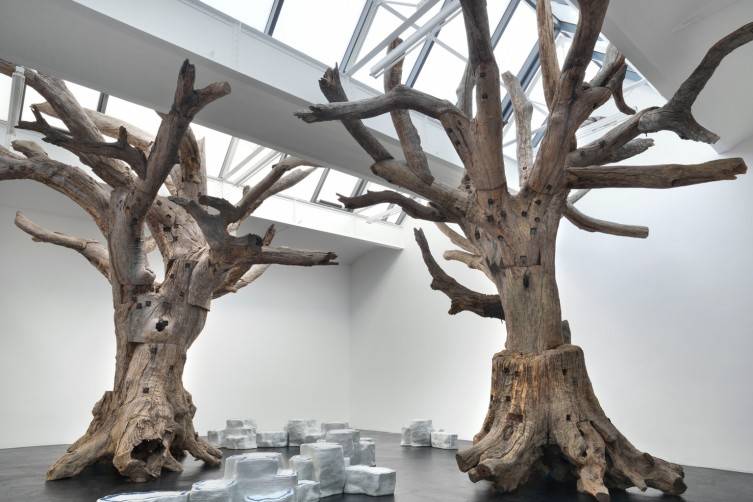China’s most famous contemporary artist Ai WeiWei is coming out of the crackdown and into the spotlight once again. Since his 81-day arrest in 2011 the artist known for his outspoken demonstrations against Chinese Communism has been incognito. The controversy he exposes in his country and exudes in his art has made him one of the most famous artists in the world. It comes as no surprise that everyone is anxiously awaiting the newest Ai WeiWei exhibition at the esteemed Royal Academy later this month.
The hype around this upcoming show has reached a worldwide audience, mainly because it has been announced that the WeiWei himself will oversee the final touches upon his arrival in London next week. After more than four years of being held captive in his native country, Ai’s passport was finally returned to him in July. Everyone is waiting to see what artistic debate he will create a platform for next. The exhibit plans to showcase over 30 years of Wei Wei’s inspiring work.
Looking back on 30 years of his career will show visitors a deeper look into the artists’ history. Stemming from his father who was “one of China’s great 20th-century poets” and similarly forbidden to practice his art by the Chinese Communist government, to his time spent in New York in the Eighties. WeiWei is often looked at in comparison to the king of Eighties contemporary art, Andy Warhol. Ai’s intensely China-influenced work might not have been so internationally recognized if it weren’t for his time spent gaining inspiration in America.
Following his time in the Big Apple WeiWei returned to China where he began focusing on architecture rather than artwork. The artist was responsible for many notable projects, including one of his more recent accomplishments the Beijing National Stadium. This interest in architecture translated into an interest in Chinese furniture pieces, which he would deconstruct in true WeiWei form. Karen Smith, the British director of OCAT Xi’an contemporary art center told The Standard, “He has gone back to remote rural areas and tried to dig out the craftsmen who have skills that are, in many other places, now lost.” These time-honored skills are renowned for their precision, something that Ai himself adheres to, she explains. “He had a solo exhibition recently in Beijing, where they reconstructed an old temple that they reclaimed the wood from, and I happened to go to see him there on the last day they were installing. He was extremely upset because the pieces weren’t perfectly placed and it didn’t quite match the vision he’d had in terms of it being installed — he’s a real perfectionist in the way he works.”
His exhibition coming out later this month will encompass a true look at all of these phases and themes in his work. Whether you like it or not, WeiWei’s work will be on your newsfeed this month!























